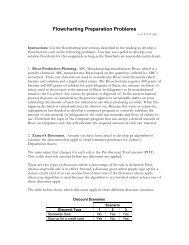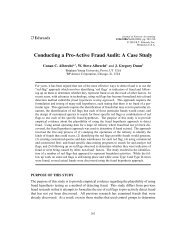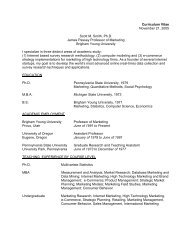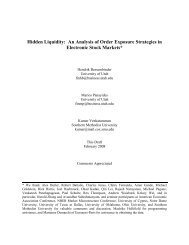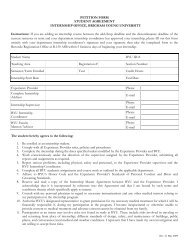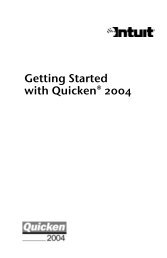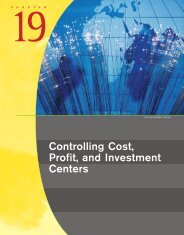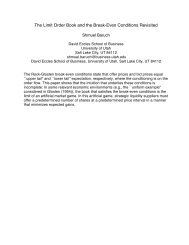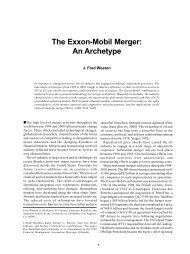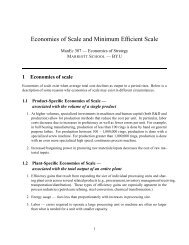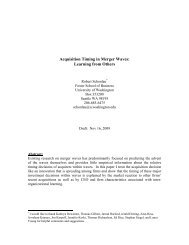why do firms go public? - Marriott School
why do firms go public? - Marriott School
why do firms go public? - Marriott School
Create successful ePaper yourself
Turn your PDF publications into a flip-book with our unique Google optimized e-Paper software.
US IPOs from 1985-2003, Brau, Couch, and Sutton (2010) find that only 45 of the <strong>firms</strong> (3%)<br />
become targets within one year. Thus for 97% of the sample, this hypothesis is not supported (at<br />
least for the first year of being <strong>public</strong>).<br />
Using Italian data, Pagano et al. (1998) test the subsequent sell-out hypothesis by<br />
predicting a high incidence of control transfers after the firm <strong>go</strong>es <strong>public</strong>. They find that nearly<br />
14% of their IPO sample sells out the controlling stake to an outsider in the three years after the<br />
IPO. They report that this frequency of sell-out is significantly greater than a sample of privatelyheld<br />
<strong>firms</strong>, providing evidence that the IPO facilitated a first step of a sell-out for 14% of the<br />
sample. In addition, Pagano, Panetta, and Zingales (1996) show for a larger sample of Italian<br />
<strong>firms</strong> that 16.4% of the IPOs sell controlling ownership stakes in the three years following the<br />
IPO. Of course, the Brau, Couch, and Sutton (2010) and Pagano et al. (1996, 1998) papers cannot<br />
detect if the entrepreneurs in those samples of 3%, 14%, and 16% had planned to divest at the<br />
time of the IPO or if they had decided to divest sometime in the one or three years after the IPO<br />
(i.e., cannot explicitly call their findings a motive).<br />
Taken together, the Brau, Couch, and Sutton (2010) and Pagano et al. (1996, 1998) papers<br />
provide indirect evidence that for a small subsample of <strong>firms</strong>, the IPO may be a first step in a total<br />
sell-out (or at least transfer of control). For the other 84% of Italian <strong>firms</strong> and 97% of US <strong>firms</strong> in<br />
their samples, one of the other hypotheses is most likely driving the IPO decision. (Although not a<br />
<strong>do</strong>minant motivation for an IPO, see Brau, Sutton, and Hatch (2010) for a study of <strong>firms</strong> that<br />
conduct an IPO and then are shortly sold off.)<br />
As a tool to cash-out/Insider liquidity<br />
Continuing the idea of the IPO as a harvest, Black and Gilson (1998) argue that the IPO<br />
gives VCs the opportunity to exit, providing an attractive harvest strategy (see also Lerner (1994)).<br />
9



